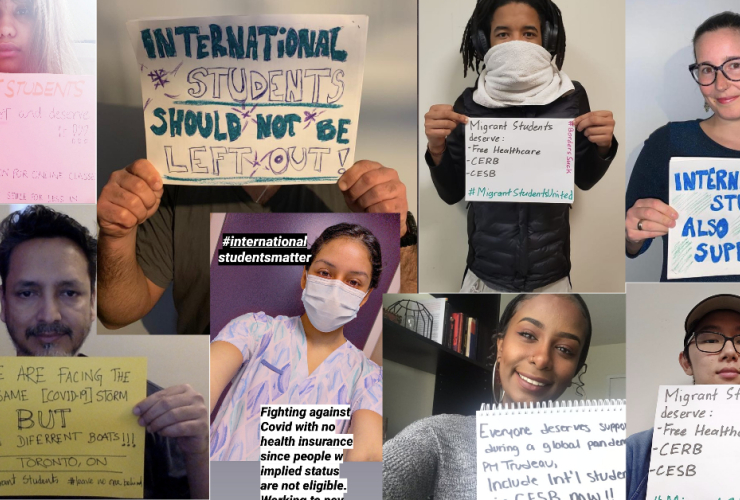Canada plans to grant some 1.2 million migrants permanent residency in the next three years, the federal government said on Friday, an increase that critics say is a mirage.
The updated plan expects 401,000 new permanent residents to be granted status in 2021, increasing to 411,000 in 2022 and 421,000 in 2023.
That compares to last year’s goal of bringing in 341,000 new permanent residents in 2020, 351,000 in 2021 and 361,000 in 2022.
But while it won’t be clear how short Canada was of its 2020 target until early next year, Syed Hussan from the Migrant Workers Alliance says partial data suggests a likely shortfall of 150,000 people this year — numbers Canada will take most of the next three years to make up.
“There's really no change at all,” he said in a phone interview. “The 2021 announcement merely keeps the same immigration numbers as before, simply trying to cover up the gaps that have happened with the overall entries this year because of COVID-19.
“They’ve not actually created any mechanisms to ensure the same will not be duplicated,” he said.
Meanwhile, he pointed out that an even larger number of people come to Canada each year on temporary permits, and their path to permanent residency remains as perilous as ever.

Those with temporary status include temporary foreign workers, international students and an international mobility category that includes post-graduate work permit holders.
“By and large, the government has missed an opportunity to respond to the crisis unveiled and exacerbated during COVID-19, with migrants and undocumented people shut out from basic rights and protections as a result of not having permanent resident status,” Syed said.
He said that one in every 23 people in Canada today does not have the right to reside permanently in the country, and that the two-tiered system his group wants abolished creates conditions ripe for the exploitation of foreign students and workers.
“It shows that the government is not actually responding to the needs of migrants or the needs of the economy,” he said of the updated immigration plan.
The government estimates that immigration accounts for all of the growth in Canada's labour force and that immigrants will make up 30 per cent of the population by 2036, up from 20.7 per cent in 2011.
Immigration Minister Marco Mendicino said the government remains committed to welcoming newcomers to keep Canada's economy growing.
“A lot has changed, but one thing hasn’t — the fact that immigration is vital to Canada’s future,” he told reporters Friday, after the numbers were presented to Parliament.
Jenny Kwan, the NDP’s immigration critic, meanwhile said the low end of the wider range the Liberals presented was giving them room to fall short.
“By lowering the minimum targets by 20,000 per year, the Liberals I think demonstrate a lack of conviction in their own targets and have left the door wide open for immigration levels to actually decrease,” Kwan told Canada’s National Observer.
She said that she supports the Migrant Worker Alliance’s push for all migrants to receive landed status on arrival, and for steps to help international students and recent graduates meet work requirements given the extraordinary circumstances.
She said she is approached by many international students — especially those from Iran, she noted — who are facing interminable delays, and that presents a risk for Canada to lose out on top talent.
“What I do know right now is this: there are many international students with all sorts of tremendous skills and some of them even have jobs offered to them, but they cannot get the pathway to permanent residency here in Canada,” she said.
“These are extremely talented individuals with a lot of expertise and knowledge and are highly sought after by industry here and still the application (for permanent residency) just seems to be so difficult.”
Morgan Sharp / Local Journalism Initiative / Canada’s National Observer






Comments